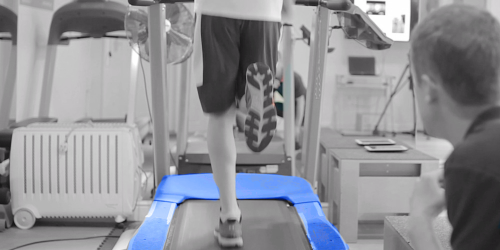Train smart this year
It’s the same at the start of every year: more runners and cyclists on the road, a crammed gym and a dying need to burn off the Christmas calories. But by doing too much (volume), too hard (intensity) and too often (frequency), do we leave ourselves at risk of becoming injured?
This blog will hopefully give you some little bitesize chunks regarding load management, ways to increase your training and also ways of optimising recovery and normal function during your training.
Load Management and Planning
Our load is again dictated by the volume, intensity and frequency that we work at. Planning is massively important when it comes to load management.
Through December and maybe even longer, many of us have decreased our training levels or not done anything at all. In this period, your body’s capacity to withstand a certain amount of work and load would have decreased.
But, what are you likely to do? Run an hour run twice a week and faster, work harder in your circuits and forget about the sick and carry on in your spinning class. In doing this, you are running the risk of breaking down and being in pain!
To help prevent the scenario above, we can first split our training into three distinct chunks:
1. Macrocycle: A Macrocycle is one weeks training. Although a week is a relatively short period, you can make sure you have adequate rest in between sessions and make sure you can fit important training sessions around your lifestyle.
2. Mesocycle: A mesocycle is a medium period of training lasting around 2- 6weeks. During this period you may have a particular area of fitness or conditioning that you want to improve just as basic stability/control, strength (see our blog here for why strength is important) or anaerobic fitness. This should help prevent you trying to improve too many aspects of fitness at the same time.
3. Microcycle: A Microcycle is your entire training year. This will allow you to plan what you are going to do in all your mesocycles, macrocycles and also make sure that you don’t attempt to do too much within one year. We often see people who book in a 10k, a half marathon, a full marathon, a tough mudder……the list gets endless. Before you know it you have too much to train for and you have a higher likelihood of breaking down.
Increasing load
You have many different ways in which we can help prevent injury, but increasing load has to be of the most effective tools in your toolbox. While you cardio may improve fairly quickly initially, your ligaments, bones, tendons and muscles need time to recover and adapt. A rudimentary approach is to increase EVERYTHING you do GRADUALLY. This includes strength work, hill work, how many sessions you do a week. A classic example is running volume: increasing total volume 10-15% per week is a golden rule of running which has been around for years and actually has some evidence to back it up too. This principle of gradually exposing your body to more work should be applied to all aspects of your training.
Maintenance of Mobility
As you perform more work, your body is likely to tighten up and become a little stiff as it tries to recover. With this happening, it may be a good idea to make sure you maintain your range of movement, particularly at some key joints. The two main areas are your ankle, calf complex and your hip. Reduced ankle mobility can contribute to various different types of injuries (see out previous blog here on maintaining ankle mobility) and will need a bit of TLC.
The next area you would ideally look at maintaining mobility is into hip extension, meaning the front of your thigh needs to stay nice and loose. This may help to prevent over using your lower back, particularly when running, squatting and lunging. These videos here, here and here may give you an insight on how to foam roll, static stretch, and dynamically stretch these areas respectively.
The End
So that is our brief insight into how to start your training SMART this year. If you do have any issues with your training this year and develop any niggles, be sure to give us a call or email and we will see what is the best option for you.






